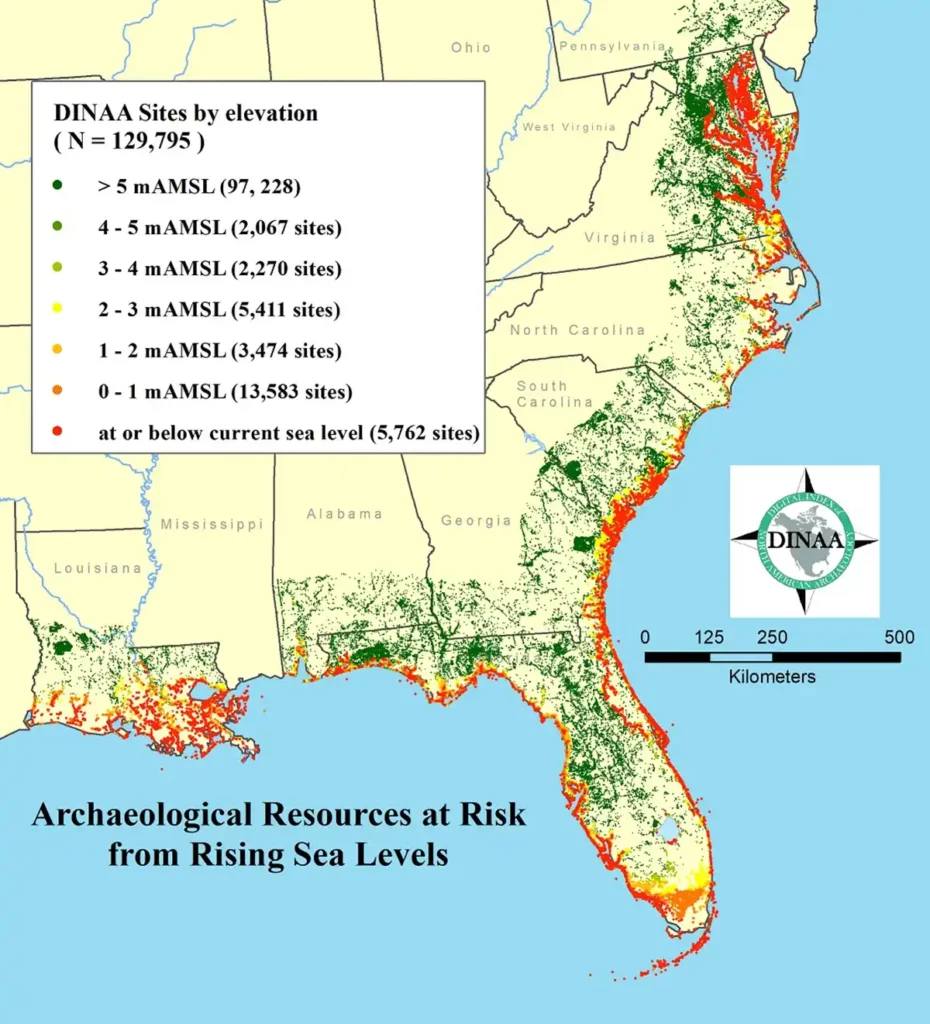Research Provides Insight to Sea-Level Rise and Archaeological Site Destruction
Research Provides Insight to Sea-Level Rise and Archaeological Site Destruction

Sea-level rise may impact vast numbers of archaeological and historic sites, cemeteries, and landscapes on the Atlantic and Gulf coasts of the southeastern United States, according to a study in the open-access journal PLOS ONE by David Anderson, professor in the Department of Anthropology, and colleagues. The study, published November 29, 2017, received widespread coverage in national and international media.
To estimate the impact of sea-level rise on archaeological sites, authors of the study analyzed data from the Digital Index of North American Archaeology (DINAA), which aggregates archaeological and historical data sets developed over the past century from numerous sources and provides the public and research communities with a uniquely comprehensive window into human settlement.
“Developing informatics capabilities at regional and continental scales like DINAA is essential if we are to effectively plan for, and help mitigate, this loss of human history,” says Anderson, lead author.
Just in the remainder of this century, if projected trends in sea-level rise continue, the researchers predict that over 13,000 recorded archaeological sites in the southeast alone may be submerged with a 1 m rise in sea-level, including over 1,000 listed on the National Register of Historic Places as important cultural properties. Many more sites and structures that have not yet been recorded will also be lost.
“The loss of archaeological sites will equate to a drowning of libraries full of information about over 15,000 years of human lives, including patterns of social and cultural change, artwork, demography, health, religion, and (a bitter irony) lessons about past human experiences with climate change,” says Joshua J. Wells, co-author in the Department of Sociology and Anthropology and Department of Informatics, Indiana University, South Bend. “DINAA shows us how we can work collaboratively and openly between archaeological researchers, governments, stakeholder communities, and the public at large to save our heritage.”
Large linked data sets, such as DINAA, that show what may be impacted and what could be lost across entire regions, are essential to developing procedures for sampling, triage, and mitigation efforts. Such research is essential to making accurate forecasts and public policy decisions about the consequences of rapid climate change, extreme weather events, and displaced populations. These factors could shape our civilization profoundly in the years to come.